KNOWN FOR MANY, RENOWNED FOR THREE
The Walla Walla Valley is an American Viticultural Area (AVA) located in Southeastern Washington and Northeastern Oregon. The Valley is a beautiful oasis amid the vast sagebrush desert that rolls across most of America’s northwest interior. The name Walla Walla means “many waters,” and it highlights the rivers and aquifers that provide so abundantly for those who discover this place—from the earliest native peoples and French fur trappers to Oregon Trail pioneers and Victorian wheat barons. For each wave of arrivals, the Walla Walla Valley presents a remarkable agricultural bounty. Our wine industry continues this rich legacy, and you can explore its different facets through the links listed above.
“Two decades ago, it was said that the Walla Walla Valley was a beautiful place to visit and taste wines, but there were few actual vineyards to behold. Today, the appellation teems with thousands of acres of grapevines, including some of the world’s most picturesque and distinctive sites.”
— Eric Degerman
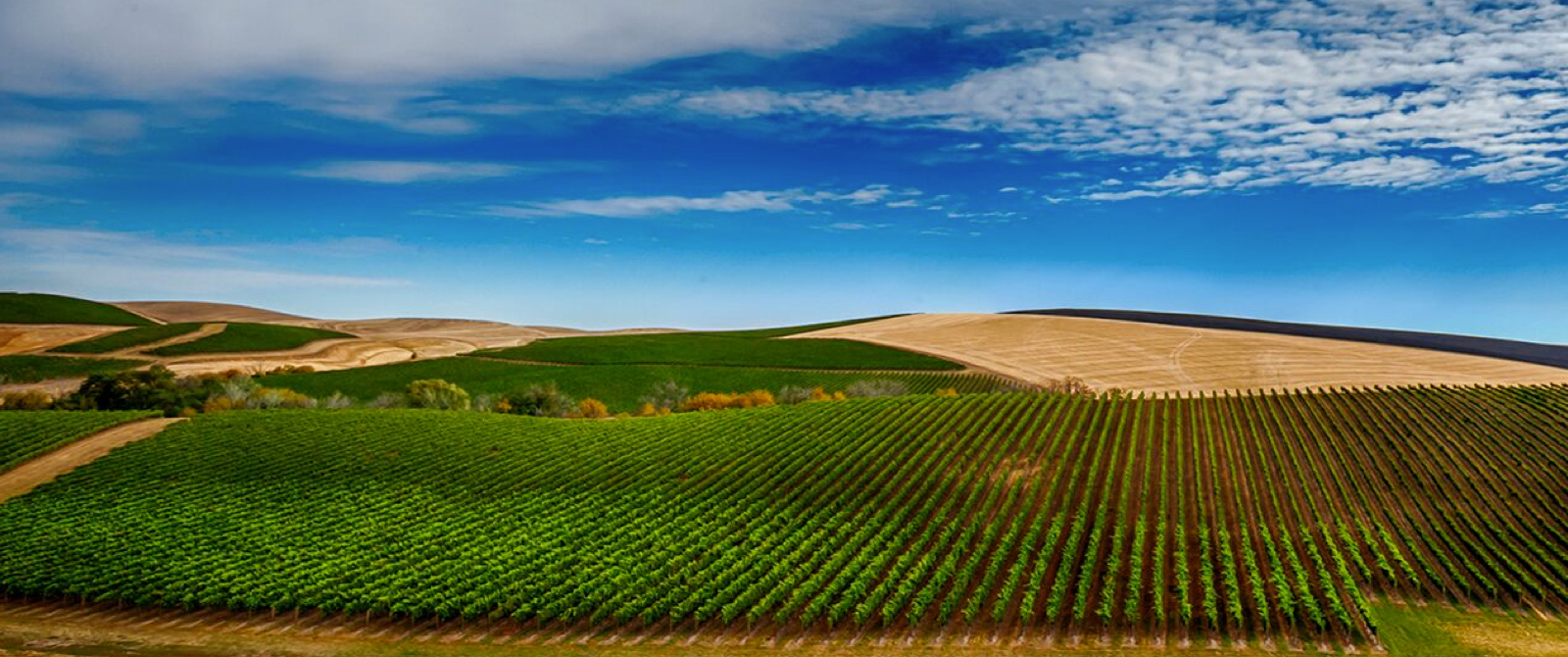
ABOUT THE APPELLATION
The Walla Walla Valley represents the best of the Pacific Northwest wine industry for very good reason. This Valley has been a regional agricultural hub for more than a century, and it still abounds with crisp apples, juicy strawberries, tender asparagus, sumptuous sweet onions, and a cornucopia of other vibrant produce. Nearly 3,000 acres of prime vineyards and more than 135 remarkable wineries are just the most recent expression of a rich farming heritage.
Official recognition began in February of 1984, when the federal government designated the Walla Walla Valley as an American Viticultural Area (AVA). Viewed on a map, the appellation’s boundaries suggest the shape of a cut diamond—which is completely appropriate since there are so many striking facets to our region. For example, the Walla Walla Valley overtly straddles state lines: two-thirds of the AVA is in Washington and one-third is in Oregon. Why? Because the finest wines reflect nature, and Mother Nature doesn’t recognize political borders.
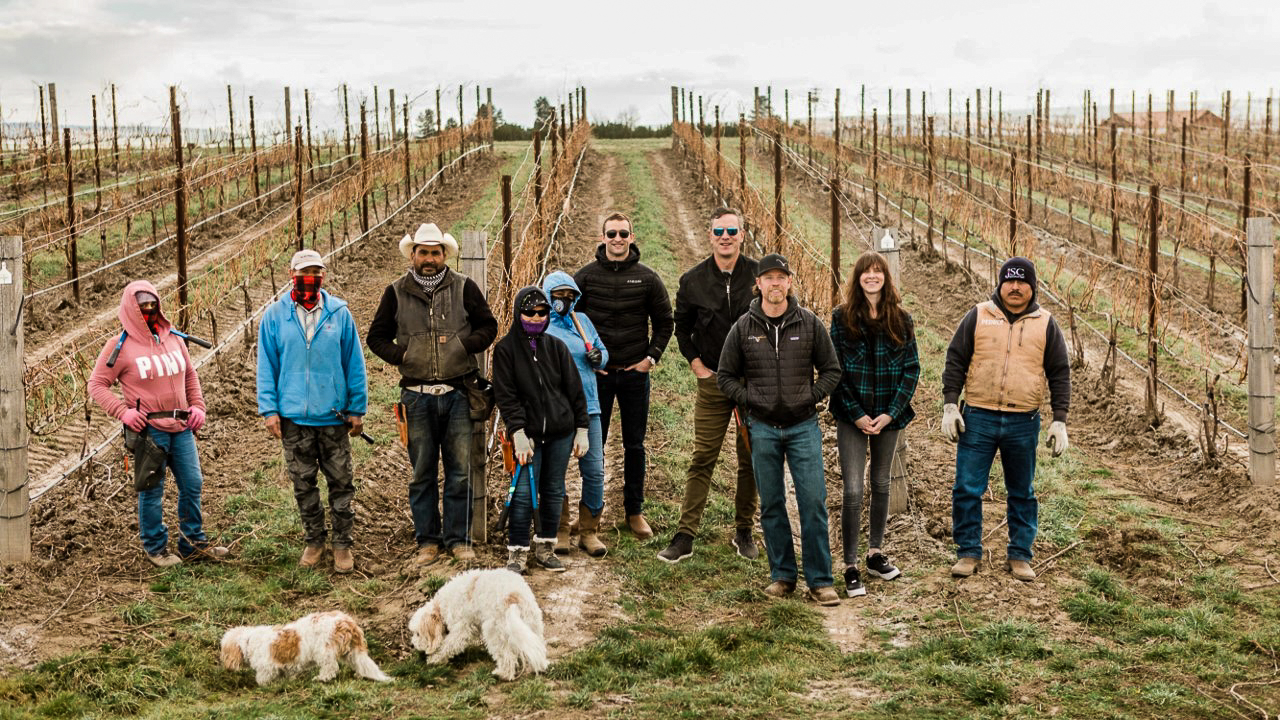
Nor does she generate anything approaching monotonous uniformity. So the elevations across our appellation soar between 400 feet and 2,000 feet above sea level. Similarly, annual rainfall figures triple from a sparse seven inches at the western end of the valley to a lush 22 inches along the foothills of the Blue Mountains to the east. If these attributes sound complex, you are correct. But wait until you consider our mosaic of soils. Please see the Terroir page for a solid grounding in our very distinctive dirt.
FACTS ON THE VALLEY
-
BREIF AVA TIMELINE
-
1850’s – First wine grapes planted by Italian immigrants
1920-1933 – Prohibition wiped out winemaking
1974 – Gary Figgins of Leonetti Cellar began planting grape vines
1977 – Leonetti Cellar became first commercial winery
1982 – Leonetti Cellar won Wine & Spirits Magazine’s American Wine Championship for their 1978 Cabernet Sauvignon
1984 – Walla Walla Valley American Viticultural Area (AVA) approved by federal government, making it the 2nd AVA in Washington, just a year behind Yakima
1998 – Approximately 20 wineries operating in the Walla Walla Valley
2001 – Walla Walla Valley Wine Alliance formed
2002 – Approximately 50 wineries operating in the Walla Walla Valley
2003 – Walla Walla Community College opened Institute for Enology & Viticulture
2010 – More than 100 wineries operating in the Walla Walla Valley
2015 – The Rocks District of Milton-Freewater approved by federal government as a sub-AVA within the Walla Walla Valley AVA
Today – Approximately 120 wineries operating in the Walla Walla Valley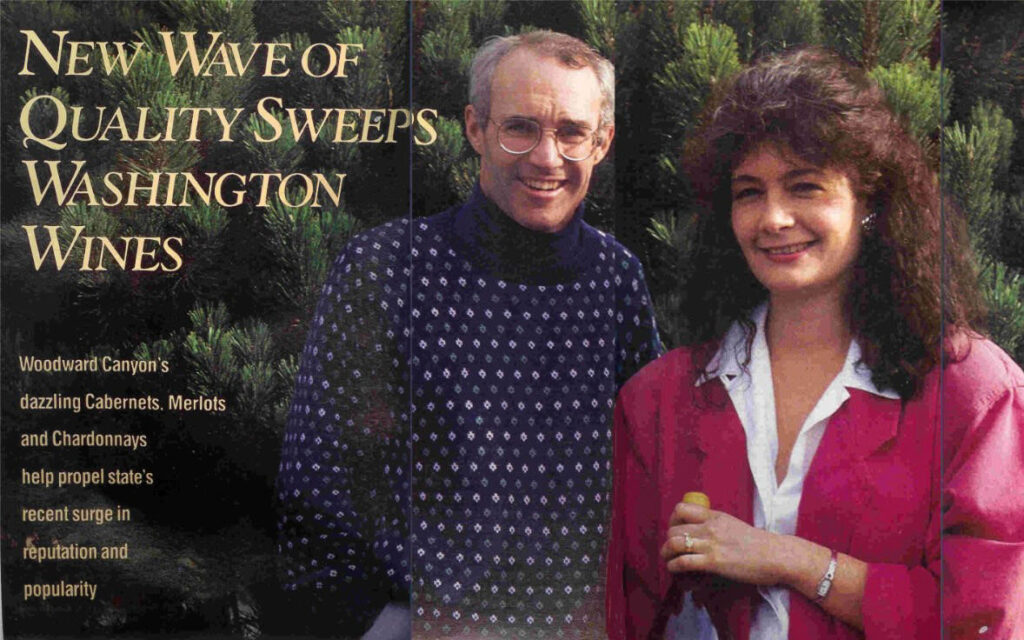
1992 Wine Spectator Article about Woodward Canyon Winery
-
GEOGRAPHY
-
Latitude 46° N, Longitude 118.5° W
In France, latitude 46°N lies midway between Bordeaux and Burgundy.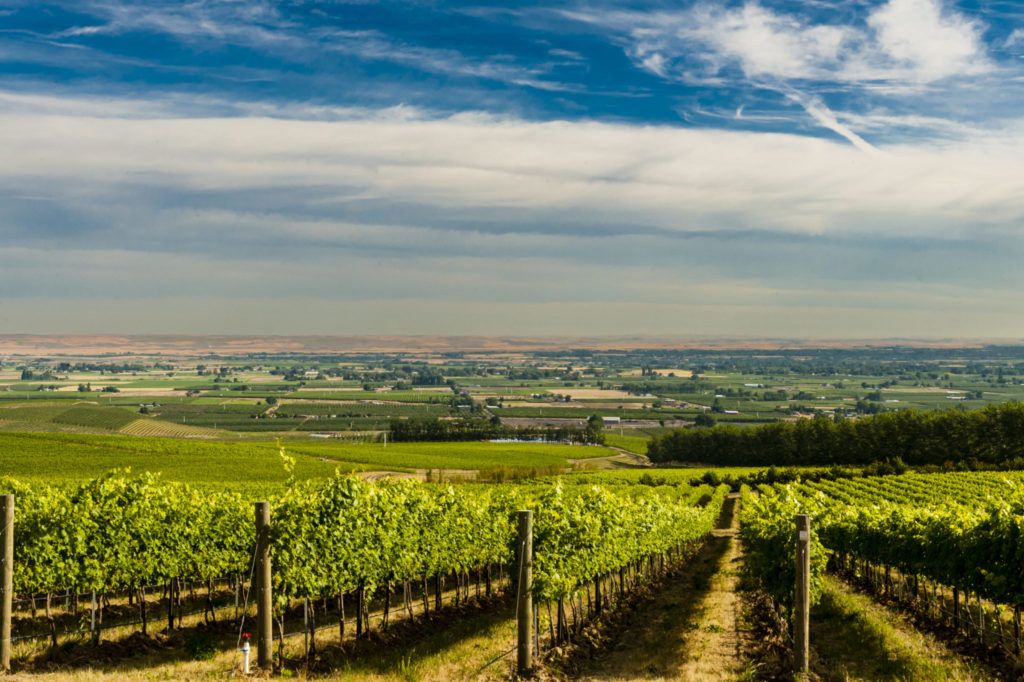
-
AREA
-
1306 km2 = 504 mi2 = 322794 acres = 130630 hectares
2,933 acres of planted vineyards in the Walla Walla Valley AVA
43% in Oregon, 57% in WashingtonMaximum elevation: 2000 ft (610 m)
Minimum elevation: 400 ft (122 m)
Median elevation: 990 ft (302 m)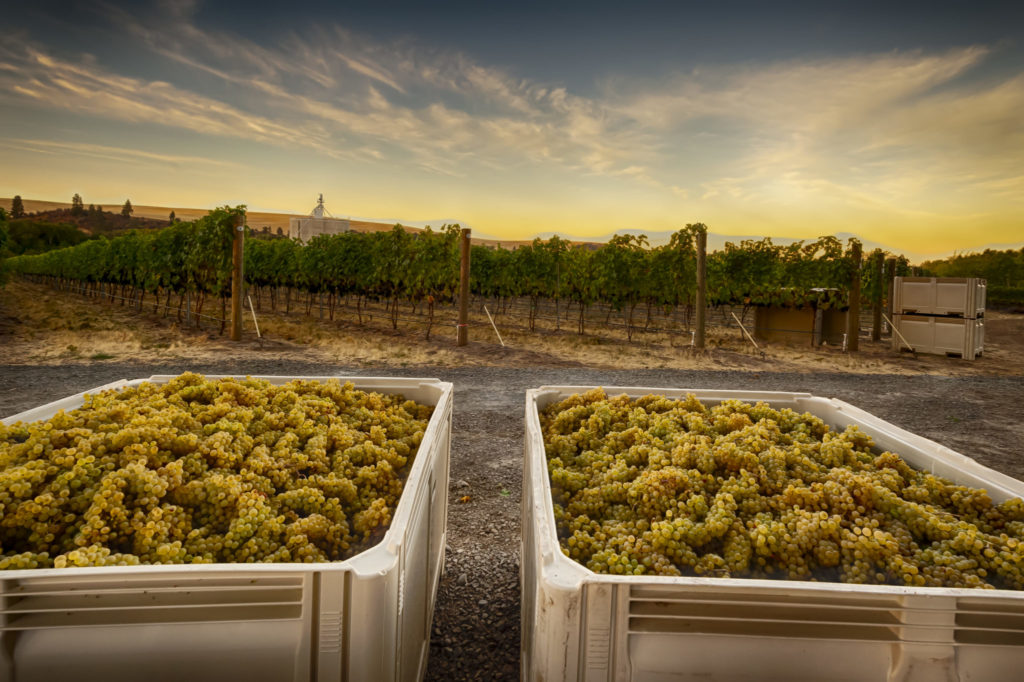
-
CLIMATE
-
Average Growing Season (April 1 – October 31) Temperature
Cool sites: 60° F (15.5°C)
Warm sites: 66° F (18.9°C)
Average for AVA: 63° F (17.2°C)Average Growing Degree-Days 50° F (10°C)
Cool sites: 2650 (1472)
Warm sites: 2900 (1611)
Average for AVA: 2800 (1556)Average precipitation
Minimum on west (dry) side of AVA: 7 in (17.8 cm)
Maximum on east (wet) side of AVA: 22 in (55.9 cm)
Average for AVA: 15 in (38.1 cm)Daylight
Maximum hours of daylight: 15:46 (summer solstice)
Average hours of daylight during growing season: 13:52Frost
Average number of frost-free days: 215
On average, last frost occurs during the last week of March
On average, first frost occurs during the last week of October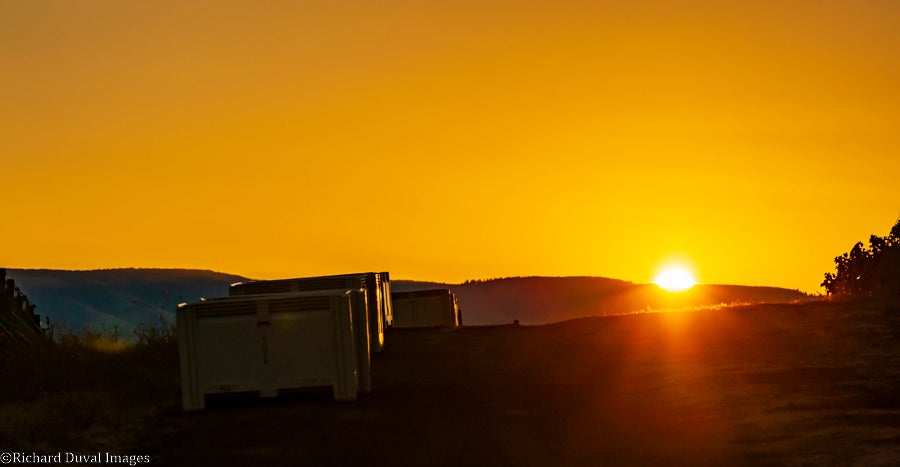
-
GEOLOGY
-
Bedrock is Basalt (dark volcanic rock) of Miocene age (15 million years)
Below 1200 ft. (valley floor), bedrock is overlain by (in order) ancient gravels, Missoula flood sediments (silt, sand, and gravel), and wind-deposited silt (loess). Above 1200 ft. (foothills) bedrock is overlain by loess of varying thickness.Soils
Four distinct soil terroirs:- Soil type: Wind-deposited silt (loess) overlying Missoula flood sediments
Location: Valley floor
Representative soil series: Ellisforde silt loam
Example vineyards: Pepper Bridge, Birch Creek, Lower Seven Hills, Windrow - Soil type: Thick wind-deposited silt (loess) overlying basalt bedrock
Location: Foothills
Representative soil series: Walla Walla silt loam
Example vineyards: Les Collines, Leonetti Loess, Spring Valley, Sevein - Soil type: Basalt cobblestone gravels
Location: floodplains of Walla Walla River and Mill Creek near cities of Milton-Freewater and Walla Walla
Representative soil series: Freewater very cobbly loam
Example Vineyards: Cayuse Armada, Zerba Winesap, Waliser Yellowjacket
Basalt cobblestone gravels is the primary soil type of The Rocks District of Milton-Freewater AVA. - Soil type: Very thin wind-deposited silt (loess) on basalt bedrock
Location: Steep slopes in foothills and canyons
Representative soil series: Lickskillet very stony loam
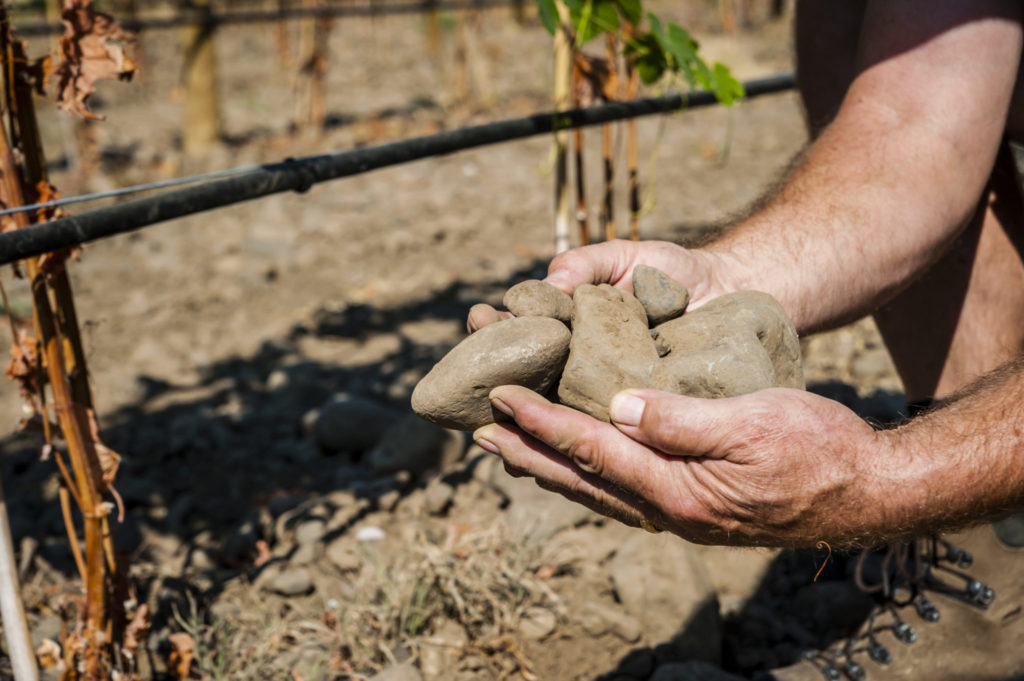
- Soil type: Wind-deposited silt (loess) overlying Missoula flood sediments
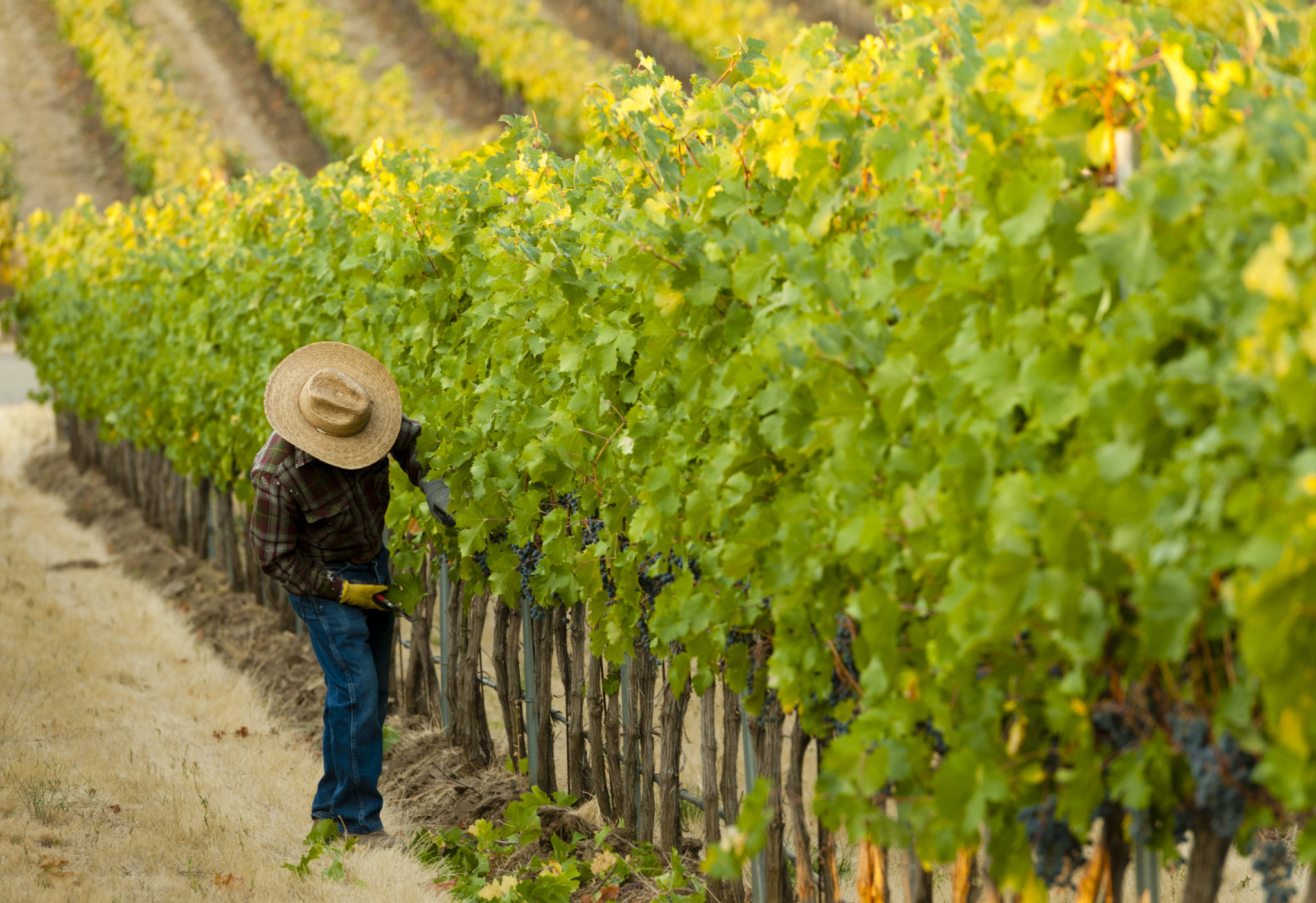
“There are many beautiful and friendly places to make wine in the world, but our level of dedication to one another in Walla Walla is something newcomers notice right away. It’s our magic! We will definitely see more newcomers each year in our valley – new players, new ownership – but I believe that this growth won’t change who we are as a community because we will pass the magic on and keep paying it forward.”
— Devyani Gupta, Valdemar Estates
